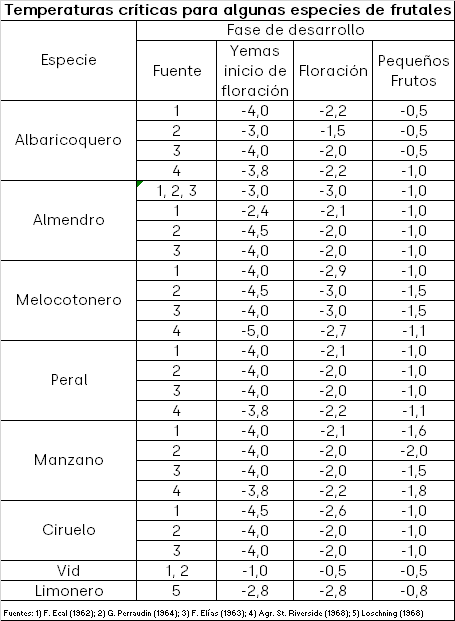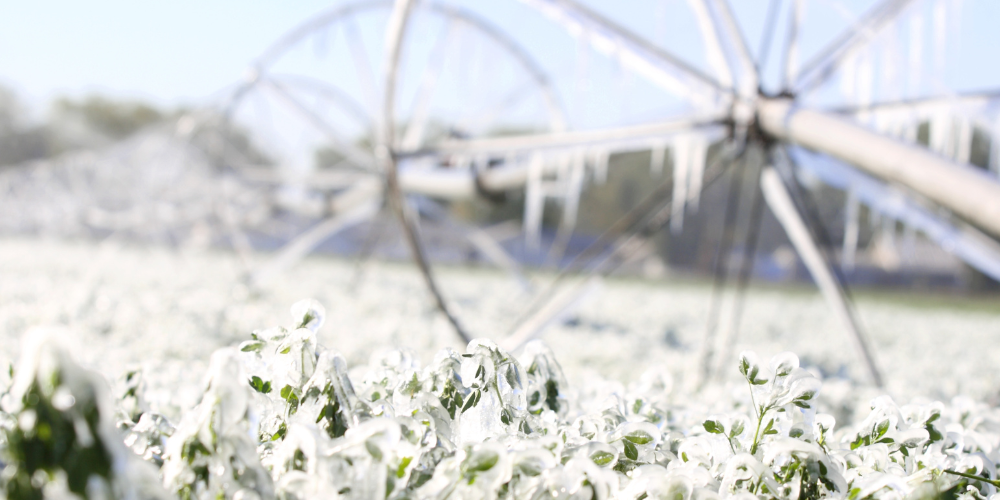Adaptation to cold
With the sudden weather variations that we encounter more frequently every day, it is very important to be aware of how our crops can adapt more to severe periods due to cold. In this resistance to cold that corresponds to the species and variety cultivated; In addition to their degree of adaptation, there are very different levels of sensitivity and tolerance depending on their stage of development.
Low winter temperatures occur at a time when plants are at rest and, under these conditions, they withstand much lower temperatures than they can tolerate when they are vegetating in spring. For this reason, whenever we talk about a plant's tolerance or sensitivity to cold, it must be related to its state of development, since the effects of cold can be very different.
Generally speaking, the greatest resistance to cold is observed during the winter stop. The sensitivity begins with the beginning of vegetation in spring (movement of the buds) and goes through its most serious point in flowering and fruit setting. The stage in which the fruits are pea-sized and almond-sized also remains dangerous. Afterwards, the cold becomes less and less dangerous.
In this graph you can descriptively observe the effects of temperature for some fruit species:

*Adaptation by Pedro Urbano Terrón
Within the knowledge of the most sensitive moments of our cultivation, we must separate our actions to prevent the effects of cold between indirect methods and direct methods:
Indirect methods
Location and orientation of the growing areas
Since ancient times, the farmer has had a notion, drawn from experience, of how and where to place the crops in each climatic zone. However, the introduction of new species and varieties into areas where they have not been cultivated before often raises problems that must be resolved.
Choice of resistant species and varieties
Elementary prudence advises, in places most prone to cold, the choice of those species and varieties that stand out for their natural resistance conditions. As we know, this depends on very different factors and, especially, on its genetic makeup and botanical characteristics.
Growing operations
Among the most important tasks in defending against low temperatures, weeding stands out, since by eliminating spontaneous vegetation, terrestrial radiation is reduced.
Fertilization and soil amendments can also contribute to the defense of crops.
Nitrogen management is very significant in this regard and an excess of it favors vegetative development and can place plants in a very unfavorable situation. In this aspect, it is important to highlight the action of our biostimulants based on L-α-amino acids, which strengthen tissues, reducing cellular osmotic potential and thus delaying the damaging effect of cold. Contrary to what one might think, the contribution of organic nitrogen from amino acids is very low in proportion, so its preventive application in times of high sensitivity helps the crop's resistance to cold, especially in sprouting phases, flowering or fruit setting; as mentioned before.
Finally, it should be noted that within the direct methods are all those that we can artificially control frost: heating methods using fuel, sprinkler irrigation, agitation of the atmosphere with mills, biochemical methods, plastic protective covers, etc. All of them are tools that the agricultural technician can count on to adapt his exploitation to the drop in temperatures in those most sensitive times.
Source: General phytotechnics treatise, Pedro Urbano Terrón.
